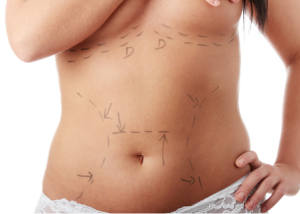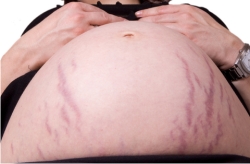For Moms, a "mommy makeover" can be an empowering experience, particularly for mother who have had a twin or multiple pregnancy. The following is an online article I gave for the incredible website
Twin Pregnancy and Beyond. I was interviewed by its creator,
Kellie:
Plastic Surgery After Twins
Getting Your Body Back

We were so lucky to get some of the best information on plastic surgery after twins from a Board-Certified Plastic Surgeon. This informative article covers our interview with
Karen Horton, M.D., and her advice on getting your body back after twin pregnancy via plastic surgery.
Her knowledgeable, straightforward counsel will help anyone who is interested in what's commonly referred to as a
"Mommy Makeover". You will definitely get a better grasp on what's involved, recovery and costs. She also dicusses what happens to our bodies after twin pregnancy, as well as what to look for in a plastic surgeon and other available procedures. A must read!
WHAT TYPE OF DOCTOR ARE YOU AND WHAT DO YOU SPECIALIZE IN?

I am a Board-Certified Plastic Surgeon and Reconstructive Microsurgeon, practicing in the Pacific Heights area of San Francisco. I specialize in both reconstructive surgery and cosmetic surgery for women, and in particular, Moms! Please visit
my bio for additional information.
At least half of my practice focuses on
breast cancer reconstruction, using new techniques that are not yet widely performed in the United States: (1) Single-stage procedure using an implant, giving women a natural result without the need for multiple surgeries; and (2) Microsurgical reconstruction of the breast using the body's own tissue, usually from the
lower abdomen or
inner thigh area. This option avoids the use of implants, and provides a permanent, soft and living tissue reconstruction, while adding the benefit of a tummy tuck or a thigh lift!
The other part of my practice focuses also on women, most of them Moms! The
"mommy makeover" spectrum of procedures rejuvenates a woman's body after she has completed childbearing. This type of surgery usually focuses on the breasts and body.
Many women who come to see me after doing an internet search say they feel more comfortable because I am a
woman Surgeon. I think many women feel most comfortable discussing their bodies, their body image and self-esteem, and their personal goals for surgery with another woman - with the same anatomy, and who can relate to them as a peer as well as their doctor.
I give every single patient who walks through the door or my practice my
full attention and absolute care. I get to know my patients intimately, and strive to understand them as a whole person. I explore how their desire to modify a part of their body will affect their life, health, wellness and spirit, and I encourage realistic goals and objectives for surgery. Each of my patients is given my personal cell phone number, and my patients are encouraged to contact me directly with any questions or concerns, no matter how big or small.
CAN YOU TELL US A BIT ABOUT WHAT HAPPENS TO OUR BODIES. ABDOMENS, BREASTS AFTER PREGNANCY
(especially a twin pregnancy)?

Many women find their abdomens have
permanent changes following pregnancy, including stretch marks, loss of abdominal tone, excess skin and extra fat deposits that have accumulated since having babies.
Most mothers do not have complete recovery of their bodies after children. Many of my patients are personal trainers, who also need a little help once they are mothers!
Regardless of whether you breastfeed or not, having babies "suck the life right out of them" (your breasts)! The
breasts are usually more and more
deflated with each subsequent pregnancy.
This loss of volume is usually addressed by a
breast augmentation, and sometimes a
breast lift is incorporated to move the nipple and areola up to a more aesthetic position and to tuck excess breast skin. Twin pregnancies and
multiple births can amplify the changes to a Mom's body.
Often the abdominal skin and rectus muscles are stretched so far apart that a hernia occurs, which is visible when you try to do a sit-up as a protruding bulge in your midline. This is repaired in a standard
abdominoplasty, together with tightening your muscles and removing excess skin. There is no substitute for this incredible operation, which is one of my favorites to do!
How a mother feels about herself as a mother and a woman is integral to her self image and self esteem. For a mom to want to take care of herself and feel youthful, sexy and confident is NOT self-centered or vain!
WHEN DIET AND EXERCISE HAVE DONE ALL THEY CAN FOR A WOMAN WHO HAS TRIED TO LOSE THE POST-PREGNANCY WEIGHT, WHAT TYPES OF PROCEDURES SHOULD SHE CONSIDER?
A
Mommy Makeover can include a breast lift, breast augmentation or breast reduction, depending on the changes of pregnancy and your specific aesthetic goals.
Because the
muscles of the abdominal wall are permanently separated after pregnancies (particular after multiple children or twin pregnancies), a million sit-ups will not help! A tummy tuck (
abdominoplasty)and/or
liposuction is often recommended to bring the abdominal muscles back together in the midline, and to recreate a flat belly.
A "mommy makeover" surgical procedure should only be considered at least 6 months after the birth of your last child so that your body has the chance to recover as much as possible and to enable you to achieve as much as you can on your own, with a healthy diet and regular exercise.
I encourage each of my patients to become as physically fit as possible before considering any major surgery. If you are athletic and your body is used to being stressed physically, with endorphin release and a good heart and lung workout, then surgery will be much less of an insult to your body. If you are a couch potato and do no physical activity at all, then surgery will be a huge stress to your system and your recovery will be much more difficult.
Any Plastic Surgery operation is a major deal. Each procedure involves cutting and sewing, bruising, downtime, discomfort, and healing time. Reality shows and celebrity gossip magazines often portray Plastic Surgery in an unrealistic light, minimizing the downtime and sensationalizing the results.
In addition, many Hollywood celebrities who have had more than their share of cosmetic procedures look abnormal and have lost their natural beauty. The best Plastic Surgery does not make you look different, does not distort your features, and is not overtly obvious to any passer-by. Most women seeking surgery in my office want a
natural result, without looking "fake" or "done". Most Moms usually just want their pre-pregnancy bodies back, or perhaps to look even better than they did before!
WHAT TYPES OF PROCEDURES ARE AVAILABLE FOR WOMEN WHO WANT TO ADDRESS THE EXTRA SKIN, STRETCH MARKS, AND BELLY BULGE LEFT AFTER HAVING TWINS?
Two main Plastic Surgery procedures apply to the post-pregnancy tummy:
(
1)
Liposuction will remove excess fat in areas that are stubborn to weight loss, such as the abdomen, flanks, pubic area, and thighs. Liposuction will not address excess skin or stretch marks, and will not help to tighten abdominal tone.
(
2) Abdominoplasty or "tummy tuck" addresses both the inside and the outside of the abdominal wall, in a three-dimensional manner:
Tummy tuck surgery not only removes excess skin and fat from the lower abdomen (including some stretch marks), but it also tightens the muscles of the abdominal wall through "rectus plication". This step of surgery "corsets" the fascia overlying your abdominal muscles together in the midline and truly decreases the diameter of your waist from the inside! The bulge of pregnancy (
"rectus diastasis", separation of the rectus abdominis muscles) is an integral part of this operation.
Depending on your particular situation, either liposuction or a tummy tuck, or both, may be recommended to achieve your specific goals.
An abdominoplasty has major downtime and recovery, and will require 4-6 weeks off of exercise and heavy activities that raise your heart rate or blood pressure, including carrying your children. You will need to have help with the activities of daily living during the immediate postoperative period, and ensure that you take care of yourself during this time, with others helping to care for your family!
LET'S TALK ABOUT BREASTS. FOR THOSE OF US WHO HAVE BREASTFED OUR TWINS, WHAT CAN WE DO ABOUT THE INEVATABLE SAGGING?

Loss of breast volume after having children is corrected by placing a breast implant behind the breast tissue to fill out what has been lost.
Breast augmentation can help restore a woman's sense of proportion to her body, and in many cases can improve a Mom's self-esteem and confidence. Breast implants are placed either behind the breast tissue (subglandular position) or behind the breast tissue and the pectoralis major muscle (submuscular position). There are proponents for each technique, based on opinion and surgical training.
Regardless of the placement of the implant, the fill material and the size, having breast implants does not interfere with breast self-examination, physician breast exams, mammograms, ultrasound, MRI or any other cancer detection techniques.
Breast implants are safe! All implants have a silicone shell; silicone breast implants are the most widely studied medical device in the history of the FDA. To read more about the science and safety of all implants, visit the
BreastImplantAnswers.com website.
Breast augmentation using implants will not interfere with breast cancer detection. Implants of all shapes and sizes have a shell made from silicone, which is an inert solid and is used in many implantable devices. The fill can be either saline (sterile salt water) or silicone gel. Sizes range from 125 cc to 800 cc, and implants may be smooth-walled or textured, round or shaped.
If you are "happy in a bra" and do not usually wear padding in your bras to achieve your aesthetic goals, a
breast lift alone may be your answer for sagging breasts. Breast lift surgery (known as mastopexy) can restore droopy breasts to a normal size and shape. This operation, although similar to breast reduction, is considered cosmetic and is rarely covered by insurance.
A mastopexy reshapes and lifts the breasts, removes excess skin from stretched-out breasts, lifts the nipples and areolas to a more youthful position, and makes the diameter of stretched areolas smaller. Breast lift surgery creates scars that are permanent, but which fade with time, and are hidden in a bra and even a triangle-string bikini top. If you desire both replacement of lost volume and a lift to your nipples, a combination augmentation-mastopexy may be indicated.
ARE THERE ANY OTHER PROCEDURES OR TOPICS YOU WOULD LIKE DISCUSS?
I also see women with
concerns about excess tissue in their external genitalia region, the labia minora. Hanging or redundant labia skin can cause embarrassment, pain with intercourse, or friction or sores when walking or doing exercise. One procedure I perform to correct this is called
labiaplasty.
Labiaplasty surgically reduces excessive large labia minora tissue to create symmetry when it is lacking, and to make the labia appear more cosmetically appealing. Occasionally excess tissue around the clitoral hood is also carefully trimmed, without any injury to the nerves that provide sexual stimulation.
A FINAL WORD OF WARNING:
It is important to realize that
any body-modifying surgery can have a major impact on body image and self-esteem. Hopefully, the change is a positive one!
However, just like a drastic haircut, there can be a "body image adjustment" period or temporary feeling of remorse after surgery. I counsel my patients at their initial consultation that this adjustment period of potential feelings of uneasiness, anxiety or "what have I done?" is completely normal and common after surgery. It can take some time to adjust to your body after any surgery, and the most healthy approach is to acknowledge how you are feeling and to communicate this to your loved ones who are assisting you after surgery.
WHAT SHOULD WE BE LOOKING FOR IN CHOOSING A DOCTOR TO PERFORM THE AFOREMENTIONED PROCEDURES?
 A Mom should do her homework when seeking a Plastic Surgeon!
A Mom should do her homework when seeking a Plastic Surgeon! You will be trusting your body to this person! Do your 'due diligence'. The surgeon should be Board-Certified and a member of the
American Society of Plastic Surgery (ASPS - if in the United States) or another major professional society, and should be current in their Board Certification and training.
They should have a great deal of experience in the procedure you are seeking, and should show you multiple before-and-after photographs of their results - not just the best outcomes, but "average" results in body shapes and types just like you! Ask to speak to some of their patients who have had surgery with the Surgeon, and don't be shy about asking them all about their experience - you need to know the good, the bad, and the ugly!
Bring a list of questions with you, and bring a friend to act as another listener and objective observer. There should be a "good fit" between you and the physician - in terms of personality, aesthetic goals for the procedure, office staff atmosphere, etc.
COST WISE, CAN YOU GIVE US A BALLPARK FIGURE ON WHAT WE SHOULD EXPECT TO PAY FOR SOME OF THE MENTIONED PROCEDURES (plastic surgery after twins)?
I don't usually discuss the costs of surgery - this is left up to my
Patient Coordinator Mary, who spends time with patients once they have completed their consultation with me, which usually lasts 45-60 minutes on our first visit. Mary then reviews the procedures we have discussed and provides an estimate of the total costs of the procedure(s), which include a surgical fee, operating room time, anesthesia fees, and sometimes an overnight stay in the hospital.
Estimated costs for the doctor's fee for some common procedures include:
* Breast augmentation $ 4,200 - 5,000
* Breast lift $ 6,000 - 8,000
* Breast reduction $ 6,000 - 8,000 (some cases may be covered insurance)
* Abdominoplasty $ 6,000 - 10,000
* Liposuction (per site) $ 2,000 - 3,500
* Labiaplasty $ 3,500 - 4,000
Keep in mind that when
multiple procedures are done at the same time, the
overall cost is less and discounts are given. I usually recommend no longer than 6-8 hours under anesthesia, and mandate an overnight stay for any procedure longer than three hours.

















 We were so lucky to get some of the best information on plastic surgery after twins from a Board-Certified Plastic Surgeon. This informative article covers our interview with
We were so lucky to get some of the best information on plastic surgery after twins from a Board-Certified Plastic Surgeon. This informative article covers our interview with  I am a Board-Certified Plastic Surgeon and Reconstructive Microsurgeon, practicing in the Pacific Heights area of San Francisco. I specialize in both reconstructive surgery and cosmetic surgery for women, and in particular, Moms! Please visit
I am a Board-Certified Plastic Surgeon and Reconstructive Microsurgeon, practicing in the Pacific Heights area of San Francisco. I specialize in both reconstructive surgery and cosmetic surgery for women, and in particular, Moms! Please visit  Many women find their abdomens have
Many women find their abdomens have  Loss of breast volume after having children is corrected by placing a breast implant behind the breast tissue to fill out what has been lost.
Loss of breast volume after having children is corrected by placing a breast implant behind the breast tissue to fill out what has been lost.  A Mom should do her homework when seeking a Plastic Surgeon! You will be trusting your body to this person! Do your 'due diligence'. The surgeon should be Board-Certified and a member of the
A Mom should do her homework when seeking a Plastic Surgeon! You will be trusting your body to this person! Do your 'due diligence'. The surgeon should be Board-Certified and a member of the 




